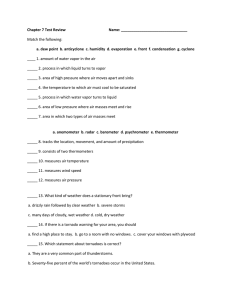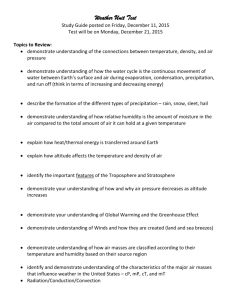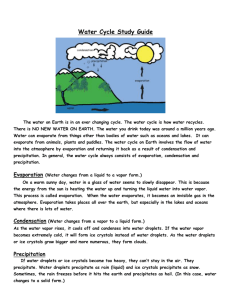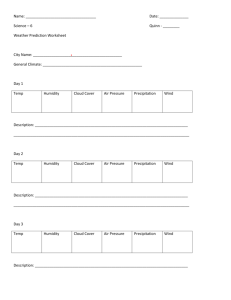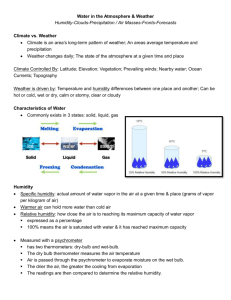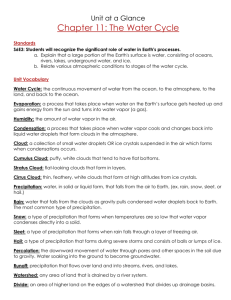Chapter 16 Section One Questions
advertisement
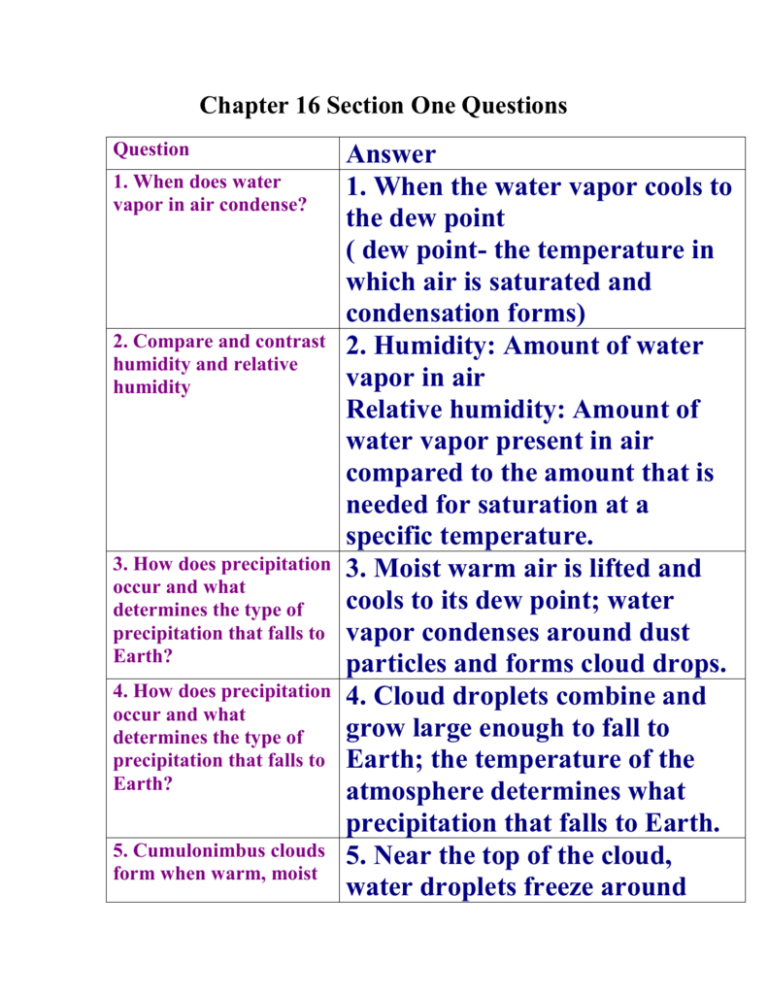
Chapter 16 Section One Questions Question 1. When does water vapor in air condense? 2. Compare and contrast humidity and relative humidity 3. How does precipitation occur and what determines the type of precipitation that falls to Earth? 4. How does precipitation occur and what determines the type of precipitation that falls to Earth? 5. Cumulonimbus clouds form when warm, moist Answer 1. When the water vapor cools to the dew point ( dew point- the temperature in which air is saturated and condensation forms) 2. Humidity: Amount of water vapor in air Relative humidity: Amount of water vapor present in air compared to the amount that is needed for saturation at a specific temperature. 3. Moist warm air is lifted and cools to its dew point; water vapor condenses around dust particles and forms cloud drops. 4. Cloud droplets combine and grow large enough to fall to Earth; the temperature of the atmosphere determines what precipitation that falls to Earth. 5. Near the top of the cloud, water droplets freeze around air is suddenly lifted. How can the same cumulonimbus cloud produce rain and hail? small ice nuclei, forming ice crystals. Hail may grow as updraft in the cloud toss ice crystals up and down. Rain forms when falling ice crystals melt or when large water droplets fall from the lower parts of the cloud.


